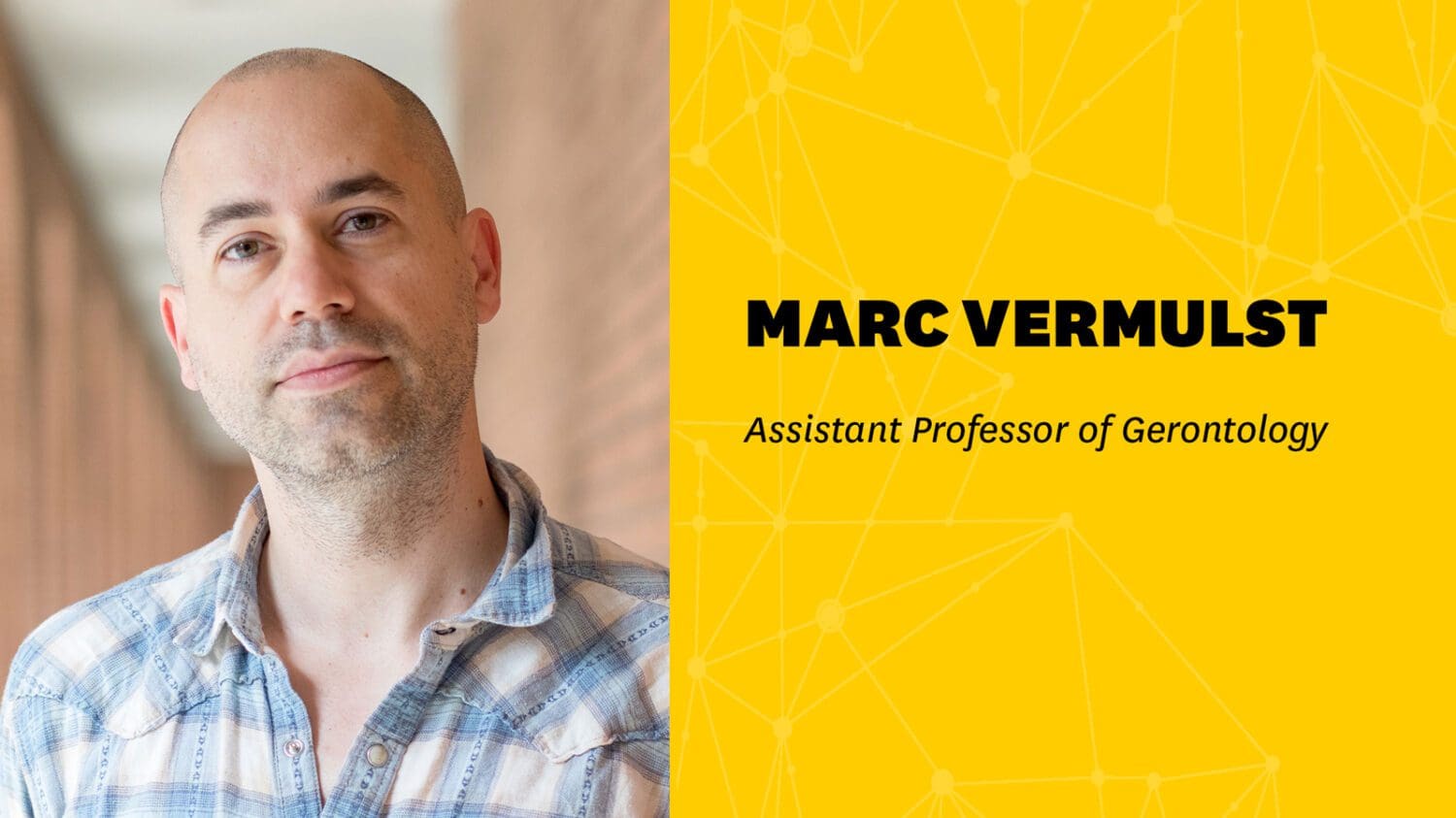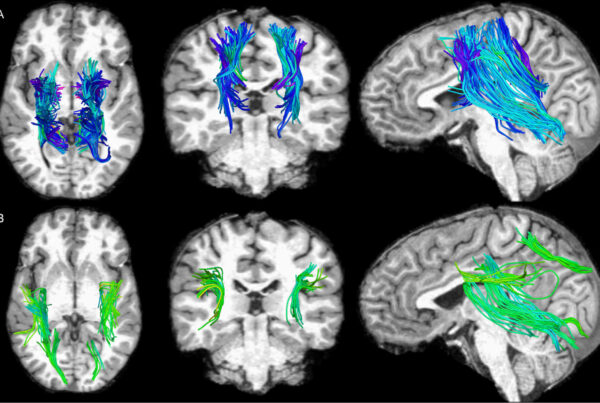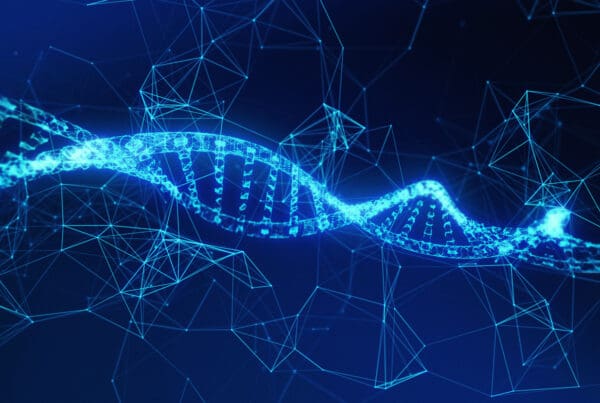Marc Vermulst, PhD, is an assistant professor of gerontology at the USC Leonard Davis School, who focuses on the role of genetic mutations in human aging and disease. He recently spoke to us about how his research into transcription errors, essentially copying mistakes, aims to strengthen vaccines and delay or prevent diseases.
On transcription errors
…when you go from DNA to a protein, there’s a short intermediate molecule that needs to be created, and that is an RNA molecule. And so conceivably you can make the wrong proteins … if a mistake occurs in the process of making an RNA molecule and that process is called transcription. So we study how frequently mistakes occur when RNA molecules are generated and what type of impact that has on aging and disease.
When I first started this project the reason why it hadn’t been studied much was because there was no technique capable of actually finding them, so it was something that we just could not see. So what my lab did is was we designed a novel tool, a molecular biology tool, that allowed us to find these transcript errors across the entire genome. So it was this massive improvement, and suddenly we could observe things that were previously unobservable and what we discovered with it was that these errors are really, really frequent and when they happen, there are a couple of impacts that they have.
The most important one probably is that they result in incorrect proteins and those proteins tend to fold in the wrong way. Proteins are large 3D molecules. In order to function, this long molecule needs to fold in a particular structure. And when you make a mistake in the generation of that protein, because of a transcript error, the protein tends to misfold and as it turns out, misfolded proteins are a key component of numerous age-related diseases, including Alzheimer’s disease, Parkinson’s disease, amyotrophic lateral sclerosis. All of these diseases are caused by misfolded proteins. So, what I think that we really found is a new component of the etiology, the origin of all of these diseases.
… transcription errors occur a hundred to a thousandfold more frequently than genetic changes. So most of the mistakes that occur in proteins are not due to genetic changes, they are due to these transcript errors.
One of the things I’m really interested in is the occurrence of age-related diseases for example Alzheimer’s and Parkinson’s disease. And one of the major questions is why do people get these diseases? There are families that have a mutation that makes them more predisposed to getting these diseases, but that really only explains five to maybe 15% of all of the cases. The remaining 85 to 95%. We really have no clue why these people get these diseases. So what I’m trying to do is I’m trying to explain these remaining 85%.
Because all of these diseases are caused by misfolded proteins, and transcription errors cause these misfolded proteins, I think that we have found a new mechanism that can cause these diseases. And if the mechanism is indeed correct that means we can now do something about it. So it’s really about finding the origin of the disease itself in order to be able to design medicine for it. That’s one of the major goals. We’re also asking when aging actually happens. We have reason to believe that the events that lead to aging can occur many, many years earlier, probably decades. And perhaps in certain cases, the pace of aging is actually set in our twenties or thirties. And that’s one of the things we’re trying to prove as well,
On COVID-19
… one of the reasons why viruses become resistant to vaccines or to drugs is because there is always one viral particle that happens to get a mutation that allows it to be resistant. So one of the major things people want to know about viral particles and different kinds of viruses is how fast do mutations accumulate in the genome of these viruses. And they want to do that for two different reasons. First of all, they want to know that because they want to be able to predict how quickly viruses might get resistance to certain treatments or vaccines. The higher the mutation rate, the faster that would happen. Secondly, they want to be able to predict what type of viruses might erupt in the future. So we now know that for example, that a coronavirus has a certain genetic composition, but that composition might be completely different next year or the year afterward. So by doing these mutational analyses, we’re able to predict hopefully what the virus might look like in the future. So we can better prepare for an outbreak in 2022 or 2023. It’s been a really rewarding project. So the reason why I got into it is because of my interest in genetic mutations and that’s a key component of the viral particles.
We’ve used this super powerful big data tool to study how the virus mutates inside cells and we have a couple of different goals with it. First of all, we want to determine how quickly these mutations actually happen. Right? So that will give us an answer as to how quickly viral particles might come up with mutations that make it resistant to certain pigments and vaccines. And we’ve already heard in on the news that new mutant versions of the virus have come up, right. , it’s a strain from Brazil, there’s a strain from England that are more virulent and more dangerous and the initial coronavirus. So that is one of the consequences of the genetic changes.
The virus has a key protein that it needs to make in order to produce the envelope of the virus itself, all kinds of surface proteins and these proteins are essential. So certain genetic changes will destroy those proteins, and that will result in the death of the virus. So if we do a massive analysis of the entire genome of this virus, and we do that over time, what will find is that there are mutations present everywhere on the viral genome, except for those few spots where the mutation kills the actual virus.
So by virtue of looking at locations in the genome, or finding them where mutations do not occur, we can find these Achilles heels of the virus. And that would allow us to guide the development of vaccines to that specific spot. … if we target the vaccine to a spot that cannot be mutated, that means that the virus has two choices. It can either be destroyed by the vaccine or a treatment itself, and in an effort to try to get out of it, it could mutate that position of its genome, but in doing so, it will kill itself, so it’s a no win situation for the virus. That is one of the goals of this project also.





